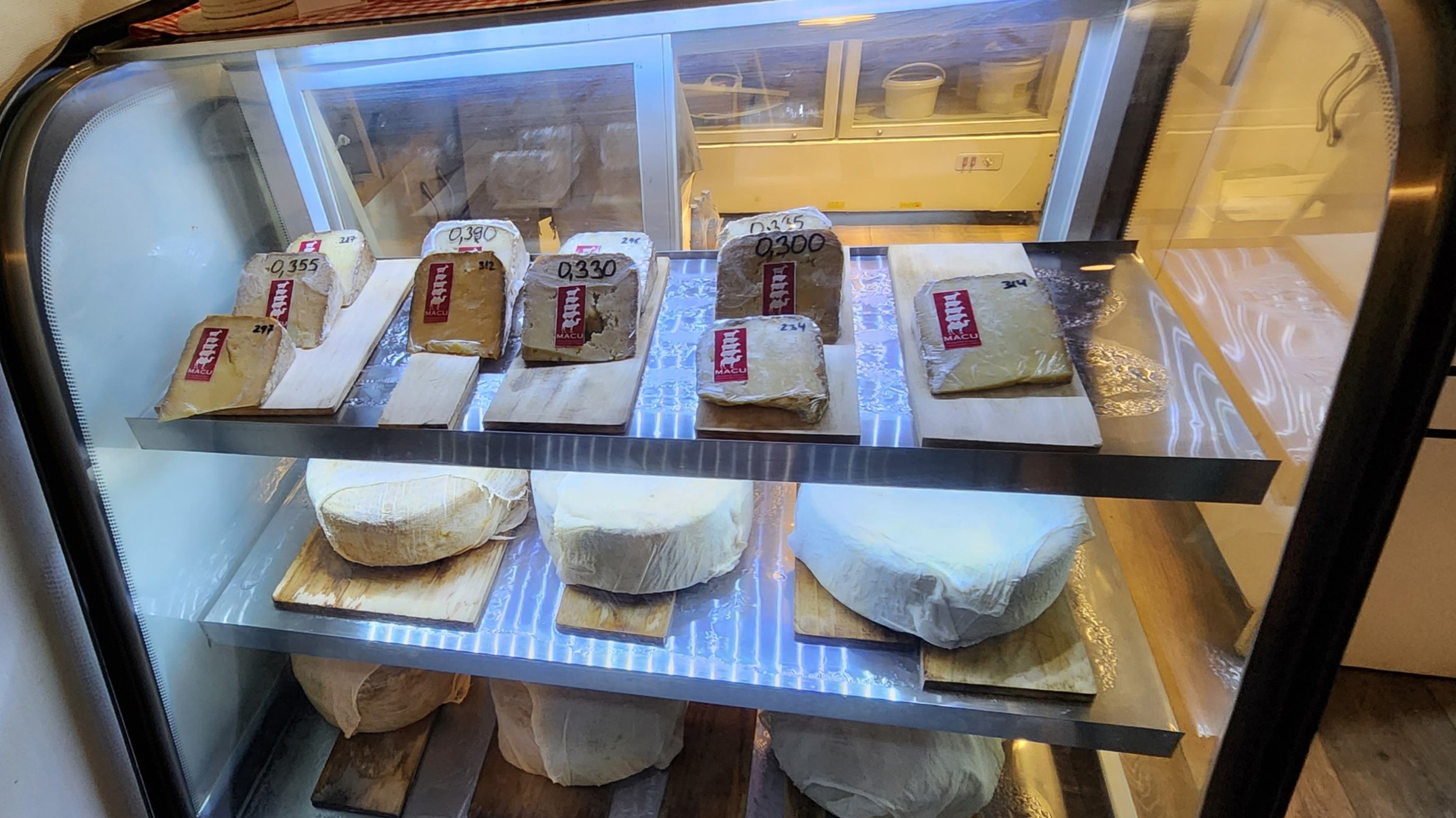Mongolia Sketch: Nomad Life
What impressive people, the nomads of Mongolia. What an honor it was in September 2023 to meet some families and witness their ancient way of life. About twenty-five percent of the 3.5 million Mongolian people live as nomads, in easily-moved gers alongside the herds of animals that constitute their livelihood and wealth.
At the time of our visit, the infamous “100 Days of Summer” (as the Mongolians lovingly refer to the brief interlude of balmy weather) were winding down. Many nomad families were preparing to move to their winter camps where these days they hunker down against the brutal winters, many in sturdy framed or brick houses, with stone corrals for their livestock.
Hospitality means loading the table with food & pouring the tea
It is a hard life, with a harsh climate, continual manual labor, and dependency on the grasslands of the steppe to nourish the herds, and thus, them. But there is also abundant beauty, whether embedded in the faces of people secure in who they are, or being beneath the “Eternal Blue Sky,” or feeling deep appreciation for the animals. Strikingly creative and colorful handiwork decorates the walls of their homes and their clothing (causing wonderment over how, for gosh sake, they have extra time for that?!).
Milk settling in the bowl, cheese drying on the bed (plus some potatoes!)
Inevitably, when our group pulled into the yard of a nomad family, the age-old traditions of hospitality were smoothly and quickly evident. The ger table would soon be covered with cheeses and fry bread and candy and other food, and piping-hot Mongolian milk tea would be poured into bowls and handed to us.
Helping grandma round up the yak babies
Living on the land is romantic, sure, but there are other concerns in the modern world. Although education is free, there are expenses related to schooling the children (Mongolia’s literacy rate is consistently around 98%). Modern conveniences, such as solar panels and motor vehicles—plus cell phones, of course—require funds.
Milking the mare
Three main sources of income are readily provided by the livestock. In the spring, nomad families can harvest fiber, particularly for the lucrative cashmere market. Lately, yak fiber has been making inroads on the international fiber scene, finding its way to high-end tailors in Europe and England. A revolutionary material in the fashion industry, the fibers of this indigenous animal are as soft as cashmere and warmer than merino wool—and for those who are sustainability-minded, yaks have much less negative impact on the land than the Kashmir goats. In the fall, meat production provides good income, too.
Nowadays, an emerging market that makes a lot of sense and which fits neatly between the fiber and meat seasons is...cheese! Think about it: babies are born in spring, and they drink milk. Every nomad family we visited was in the throes of milking the yaks, cows, horses, goats, camels, and then milking again, sometimes several times a day. Between caring for the animals and making loads and loads of cheese and other milk products, nomad families stay plenty busy in the summer! Much of this food stays with the family, of course...but a man named Michael Morrow, who has lived for decades in the region, is on a mission to bring Mongolian cheese production on a sustainable scale to the world market.
Tuvan shaman by the bonfire
Why not? As he said in a 2021 article in Mongolian Economy, “There is a big gap [in family earnings] in summer when milk is plentiful...Mongolia has around 70 million head of livestock. Lactating mothers produce a billion liters of milk during the summer. A hundred small cheese plants, operating for 100 days from June to September, could produce 2,000 tons of cheese. To do so they would use only 20 million liters of milk. We have more than enough milk.”
Putting Mongolian cheese onto the global market, even at a modest level, could go far to preserve nomad culture. To that end, Morrow and some fellow entrepreneurs are working to build a network of artisan cheesemakers—the Mongolian Artisan Cheesemakers Union (MACU)—and develop a high-quality cheese export industry. Next time you’re in the capital city of Ulaanbaatar, stop in at the MACU fromagerie and try one of their delicious cheeses!
Mongolian cheeses for sale
But to make a living is one thing, and to have a life is another. The life of the nomad families whom we met is relatively uncomplicated by most of the modern contrivances, such as TV and social media that can pressure people to be something they are not. In many ways, despite the hardships, it is an enviable life. Quiet. Surrounded by the natural world and the animals. Brilliant night skies. Clean air. Yes.
Early in our travels across the province of Bayan Ulgii we were summoned one evening to a giant bonfire which was holding back the darkness of night. A Tuvan shaman and his helper had come to our camp. The smallest ethnic minority within Mongolia, the Tuvan people continue to cherish their nomadic, animist heritage, as they have for centuries. The shaman made his way slowly and deliberately around the edge of the licking flames while beating a handheld drum that looked much like an Irish bodhran. We were entranced as he summoned ancestors to welcome us, and asked them to keep us safe on our journey. I couldn’t help but imagine that the spirit world somehow heard him better because of the immensity of that land, and the space it has for such things.
Please go to www.kazakhtour.com (our tour operator Dosjan Khaval’s website) and www.wild-earth-journeys.com (our tour host Thomas Kelly’s website) for some wonderfully tempting opportunities to travel in Mongolia. I can heartily recommend both.










